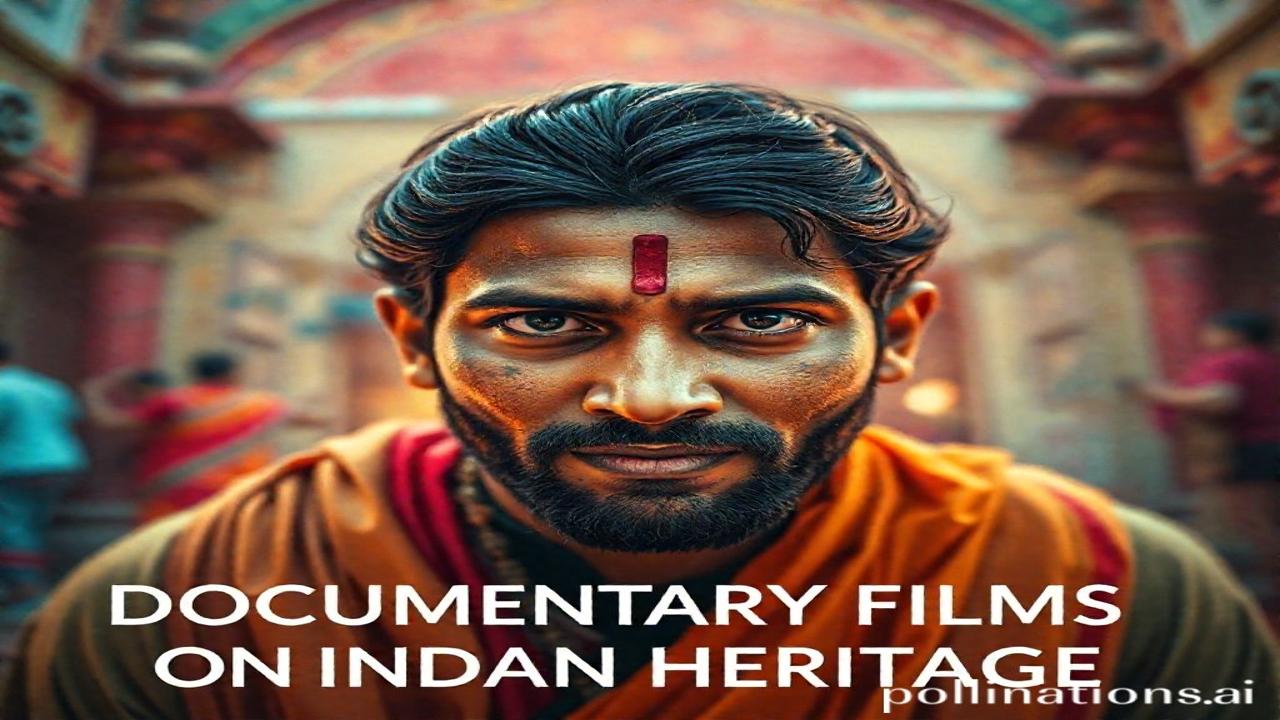Alright, let’s dive into the world of documentaries and explore how they bring India’s rich heritage to life!
Documentary Films on Indian Heritage: A Journey Through Time and Culture
Kabhi socha hai, jab hum apne phone par scroll karte hain, kitni kahaniyan hamare aas paas bikhar rahi hain? Waqt ki dhool mein dabi, yeh kahaniyan humein hamare ateet se jodti hain, hamari pehchan banati hain. Documentary films are like those magical time machines that transport us to forgotten eras, allowing us to witness history unfold before our eyes. Aaj, hum baat karenge unhi films ki – documentary films on Indian heritage.
इतिहासिक पृष्ठभूमि / Historical & Cultural Context
What are we talking about? Documentary films on Indian heritage are non-fiction movies that explore the history, culture, traditions, and art of India. They can cover anything from ancient civilizations like the Indus Valley to the Mughal era, from classical dance forms like Bharatanatyam to the vibrant festivals of Holi and Diwali. These films aren’t just about recording events; they’re about interpreting them, offering insights, and preserving them for future generations.
When and where did this start? The concept of documentary filmmaking took root in the early 20th century. In India, its development coincided with the independence movement and the need to document the struggles and aspirations of a nation. Early documentaries often focused on social issues, but increasingly, attention turned to preserving and promoting Indian culture and heritage.
Why is this important? India’s history is a vast ocean, filled with stories of empires, philosophies, art, and revolution. Without these documentaries, many aspects of our heritage would remain obscure, confined to dusty books and academic papers. These films make history accessible, engaging, and relevant to everyone. They remind us of our roots, our values, and the unique “Bharatiyata” that defines us. They also offer a platform for cultural exchange, allowing the world to appreciate the depth and diversity of Indian civilization.
ज़मीनी सच – लोग और जीवन / Deep Dive with Human Element
Imagine a scene from a documentary about the artisans of Kanchipuram, the silk weavers.
“Beta, yeh dhaaga sirf dhaaga nahi hai. Yeh hamari peediyon ki mehnat hai, hamari sanskriti hai,” the master weaver, Thiru, tells his grandson, Rajan. The camera zooms in on his wrinkled hands, expertly maneuvering the loom. “Kabhi socha tha, jo sari tumhari maa Diwali pe pehenegi, woh kitni mushkil se banti hai?”
Rajan, a young boy more interested in his phone than the intricate designs, slowly begins to understand the weight of his family’s legacy. The documentary doesn’t just show the process of weaving; it reveals the lives, the sacrifices, and the hopes of these artisans who are the custodians of a timeless craft. Ma Rukmini ne aaj naye kapde pehne, kyunki mandir mein utsav tha… the community thrives because of this ancient skill.
धरोहर और पहचान / Cultural Significance Today
Today, we see echoes of our heritage everywhere. From the intricate carvings on ancient temples that inspire modern architects to the timeless wisdom of the Vedas that informs contemporary philosophy. Documentary films help us connect these dots.
Consider the resurgence of interest in Ayurveda and Yoga. Documentaries showcasing the ancient roots and scientific basis of these practices have played a crucial role in their global popularity. Similarly, films about Indian textiles, cuisine, and music are not just documentaries; they are celebrations of “Bharatiyata” and a powerful tool for cultural diplomacy.
मजेदार तथ्य या भ्रम-भंजक / Fun Fact or Myth-Buster
Myth Buster: Log samajhte hain ki ancient India sirf religion aur philosophy ki baat karta tha. Lekin asli sach yeh hai ki India was a powerhouse of science and technology. From mathematics to medicine, Indian scholars made groundbreaking contributions that shaped the world. Documentary films are now showcasing these achievements, dispelling misconceptions and promoting a more holistic understanding of our history. For example, did you know that the concept of zero was developed in India?
दृश्य और भावनाएं / Visual & Sensory Layer
Imagine watching a documentary about the Kumbh Mela. The air smells of incense and marigolds. The chants of “Har Har Mahadev” echo through the crowd. The saffron robes of the sadhus create a sea of vibrant colors. The Ganges River shimmers under the morning sun. The sheer scale and energy of the event are overwhelming, a truly sensory experience that transcends words. You can almost feel the dust on your feet and the energy of the devotees around you. Woh eent ki deewar ab bhi waqt ke jakhmon ko chhupaye hai, witnessing centuries of devotion.
अंतिम विचार या उद्धरण / Closing Insight or Quote
Documentary films on Indian heritage are more than just movies; they are windows into our soul. They remind us that we are the inheritors of a rich and complex legacy, a legacy that deserves to be celebrated, preserved, and passed on to future generations.
As the Upanishads say: “Vasudhaiva Kutumbakam” – The world is one family. Let’s use these films to foster understanding, empathy, and appreciation for the diverse cultures that make our world so beautiful.
